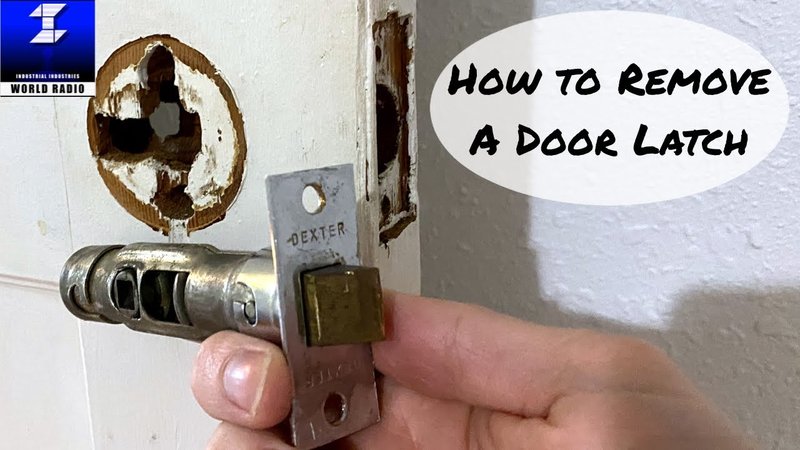
When you lubricate a door latch, you’re typically aiming for a smoother operation. It’s like giving your door a nice oil change. However, instead of the sleek, efficient movement you expect, you find it feels oddly soft or “spongy.” What gives? Let me walk you through some possible reasons for this perplexing sensation and how to get your latch back in shape.
Understanding Door Latches
Before diving deeper, let’s clarify what a door latch actually does. A door latch is a small mechanism that allows a door to close securely and remain shut. Think of it as the trusty soldier that keeps your door in line. When you turn the doorknob or push the handle, the latch moves to either lock or unlock the door. But if it’s not functioning properly, you could end up with a latch that feels less like a reliable lock and more like a soft sponge.
There are different types of door latches, but most operate in a similar way. They have a spring-loaded mechanism that helps them retract and extend. This mechanism is essential for ensuring that the door stays firmly shut while allowing for smooth functionality. But when you add lubrication into the mix, things can sometimes go sideways.
Common Causes of a Spongy Door Latch
Now you might be wondering, what exactly causes this spongy feel after lubrication? Here are a few common culprits:
- Type of Lubricant: The kind of lubricant you use can significantly affect how your latch feels. Some lubricants, especially those that are too thick or waxy, may create a gummy residue that can hinder the latch’s normal movement.
- Over-Lubrication: Applying too much lubricant can also lead to a spongy feel. Think about it: if you pour too much syrup on your pancakes, they become soggy and hard to handle. The same principle applies here.
- Debris Buildup: Sometimes, dirt or debris can mix with the lubricant, creating a mushy texture that can affect how your latch operates. It’s like trying to open a door with a sticky mess on your hands—it’s just not going to work smoothly.
Choosing the Right Lubricant
Choosing the right lubricant can make all the difference in maintaining the feel of your door latch. Generally, a light silicone spray or graphite powder is recommended for door mechanisms. These options are less likely to attract dust and grime than greases or oils, which can make your latch feel sticky over time.
When using a lubricant, be sure to apply just a small amount. You don’t want the latch to get overwhelmed and turn into the door version of a soggy sponge. A little spray or a tiny sprinkle of graphite goes a long way. Start with less, and you can always add more if necessary.
How to Properly Lubricate Your Door Latch
Here’s a quick guide on how to lubricate your door latch effectively:
- Clean the Latch: Before applying any lubricant, make sure you clean the latch thoroughly. Use a cloth to remove any dirt or old lubricant.
- Apply Lubricant: Choose a light silicone spray or graphite powder. Apply it sparingly—just a little can go a long way.
- Test the Latch: After applying, test the latch by opening and closing the door a few times. Does it feel smooth? If not, you might need to clean again or adjust the amount of lubricant.
Adjusting the Door Latch Mechanism
Sometimes, a spongy feel can result from misalignment within the door latch mechanism itself. If the latch isn’t seated properly in the strike plate or if the screws are loose, it can cause soft feedback when you operate it.
To check for alignment, do the following:
- Examine the Strike Plate: Make sure the latch engages properly with the strike plate. If they don’t meet correctly, realign the strike plate or adjust the door itself.
- Tighten Screws: Often, the screws that hold the latch can loosen over time. Give them a little twist to see if that improves the latch’s feel.
- Inspect the Latch Bolt: Sometimes, the latch bolt itself can be slightly bent or worn. If this is the case, consider replacing it for a better fit.
When to Seek Professional Help
If you’ve cleaned, lubricated, and adjusted everything but still feel that spongy sensation, it might be time to call in a professional. Sometimes a latch may need replacement due to wear and tear.
You might also consider consulting a locksmith if the issue persists. They can provide expertise and resources to ensure that your door functions properly, saving you the hassle of potentially aggravating the issue further.
So, if your door latch feels spongy after lubrication, don’t panic! There are a few likely reasons behind this odd sensation, from the type of lubricant used to alignment issues within the latch mechanism. By picking the right lubricant, applying it sparingly, and making necessary adjustments, you can revitalize your door latch.
Remember, a well-maintained door latch is key to your home’s overall security and function. With a little care, you’ll be back to smooth openings and closings in no time!
